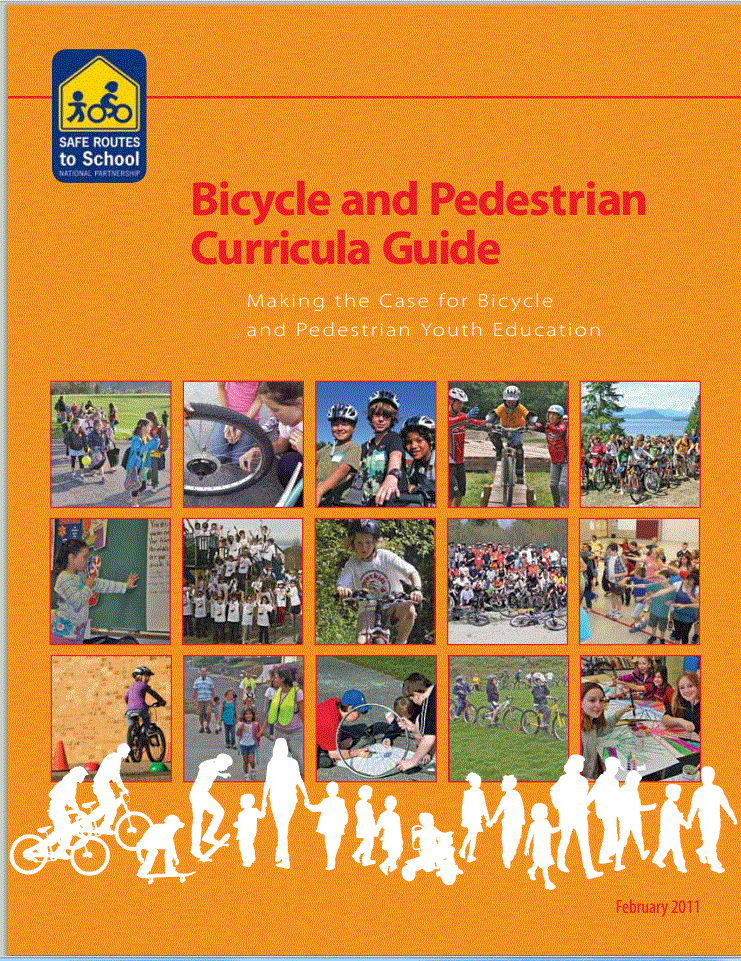 This week has been jam packed with great Safe Routes to School events. The week kicked off on Sunday with the Takoma Park 5K for Safe Routes to School.
This week has been jam packed with great Safe Routes to School events. The week kicked off on Sunday with the Takoma Park 5K for Safe Routes to School.
Resource Library
A number of studies show that students who spend time in PhysicalEducation or other school-based physical activity increase or maintain their grades and scores on standardized tests even when they receive less classroom time for academic subjects.
Students spend a significant amount of time at school or in school-related activities, schools play a central role in providing opportunities for students to engage in regular physical activity. School boards can consider adopting, revising, monitoring and/or evaluating policy and curriculum that support increased physical activity.

This report indicates how Safe Routes to School is being institutionalized at select schools, and providing a mechanism to improve student and school health.
 Last week three representatives from the Safe Routes Partnership (Safe Routes Partnership) attended the Childhood Obesity Conference in Long Beach, CA. The Childhood Obesity Conference brings together advocates, funders, public health professionals and agency staff from across the United States to focus on the challenges of reducing obesity in our communities.
Last week three representatives from the Safe Routes Partnership (Safe Routes Partnership) attended the Childhood Obesity Conference in Long Beach, CA. The Childhood Obesity Conference brings together advocates, funders, public health professionals and agency staff from across the United States to focus on the challenges of reducing obesity in our communities.
This policy brief describes research showing the benefits of physical activity for student learning, explains the state requirements and standards for P.E., highlights board actions to support P.E. and lists additional resources board members and others might find useful.
 Safe Routes to School practitioners are challenged by the need to work with various partners at city, county, regional, state, district and school-related organizations. Inevitably, the success of programs, projects, policies and future funding opportunities are reliant upon the strength of these relationships.
Safe Routes to School practitioners are challenged by the need to work with various partners at city, county, regional, state, district and school-related organizations. Inevitably, the success of programs, projects, policies and future funding opportunities are reliant upon the strength of these relationships.
 This August, Memphis, Tennessee was honored by the National Complete Streets Coalition for adopting the Nation's 500th Complete Streets Policy. The Safe Routes Partnership's Tennessee Network sent a letter to Mayor Wharton of Memphis, congratulating him on the honor and for leading the efforts for Complete Streets in Memphis.
This August, Memphis, Tennessee was honored by the National Complete Streets Coalition for adopting the Nation's 500th Complete Streets Policy. The Safe Routes Partnership's Tennessee Network sent a letter to Mayor Wharton of Memphis, congratulating him on the honor and for leading the efforts for Complete Streets in Memphis.
Released in April 2014, the 2014 United States Report Card on Physical Activity for Children and Youth assesses the levels of physical activity and sedentary behaviors in American children and youth, facilitators and barriers for physical activity, and related health outcomes.
The purpose of these guidelines is to summarize the most successful ways of implementing ARS 28- 797 in order to effectively achieve school safety throughout Arizona.
This webinar from September 26, 2013 discusses how the Safe Routes Partnership can help support campaigns to increase shared use and street scale improvements in underserved communities.
 This October I was asked to write a guest post for the Green Trips program blog on how families and children can learn about their impact on the environment, their health, and their budgets by choosing to bike or walk for transportation instead of using a car.
This October I was asked to write a guest post for the Green Trips program blog on how families and children can learn about their impact on the environment, their health, and their budgets by choosing to bike or walk for transportation instead of using a car.
Part IV of the series "Steps to a Walkable Community: A Guide for Citizens, Planners, and Engineers."
 While it seems that the MAP-21 transportation law passed fairly recently, Congress only passed a two-year bill and MAP-21 expires in September 2014. Congress is starting to hold hearings on the transportation law and to consider how to fund the next bill.
While it seems that the MAP-21 transportation law passed fairly recently, Congress only passed a two-year bill and MAP-21 expires in September 2014. Congress is starting to hold hearings on the transportation law and to consider how to fund the next bill.
This brief created by the National Center for Safe Routes to School to address unsafe driving behaviors and outlines steps local safe routes to school programs can take to measure impacts of their activities.
 Over the past decades bicycle safety education has developed into its own field, ultimately being implemented in a variety of ways, depending primarily on the amount of time and resources available to convey important concepts. These choices are not easy and inevitably we, as educators, must make informed compromises.
Over the past decades bicycle safety education has developed into its own field, ultimately being implemented in a variety of ways, depending primarily on the amount of time and resources available to convey important concepts. These choices are not easy and inevitably we, as educators, must make informed compromises.
These briefings sheets were developed with funding support from the National Center for Safe Routes to School. The briefing sheets are intended for use by transportation engineers and planners to support their active participation in the development and implementation of Safe Routes to School programs and activities.
 Freedom. It means different things to different people. As a child, freedom to me meant a whole Saturday to ride my bike, named Winning Colors in honor of the female horse that won the1988 Kentucky Derby, across ditches, dirt roads, woods, marshes, and the occasional paved street.
Freedom. It means different things to different people. As a child, freedom to me meant a whole Saturday to ride my bike, named Winning Colors in honor of the female horse that won the1988 Kentucky Derby, across ditches, dirt roads, woods, marshes, and the occasional paved street.

